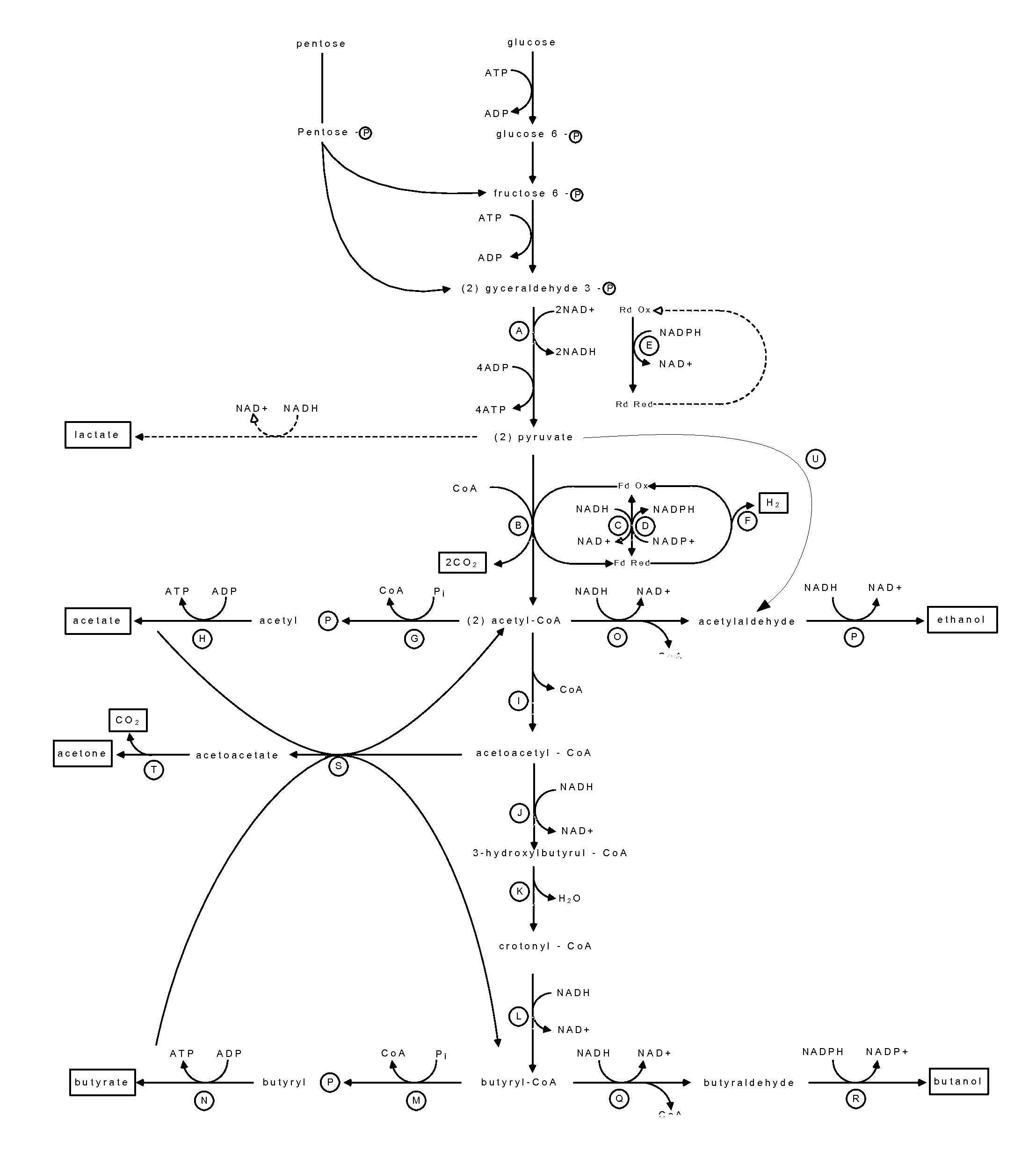Real time monitoring of microbial enzymatic pathways
a technology of enzymatic pathway and real-time monitoring, which is applied in the field of real-time monitoring of microbial enzymatic pathway, can solve the problems of increasing and then decreasing, affecting cell survival, and changing the rate of production of desired target products, so as to achieve negative correlation between the expression of reporter and the increase or decrease of the target produ
- Summary
- Abstract
- Description
- Claims
- Application Information
AI Technical Summary
Problems solved by technology
Method used
Image
Examples
first embodiment
[0109]This invention contemplates, in particular, two embodiments of this system. In a first embodiment, the reporter construct is separate from the host gene and its transcription regulatory nucleotide sequences. The organism thus contains parallel regulatory constructs: One controlling expression of the enzyme and a copy controlling expression of the reporter. Because the transcription regulatory nucleotide sequences are the same, the expression level of the reporter mirrors the expression level of the signal enzyme in the system. The term “transcription regulatory nucleotide sequence” encompasses all nucleotide sequences that are responsible for the control of the expression of a gene. This includes promoter and enhancer sequences, and sequences where gene repressor proteins and gene activator proteins bind. It further includes regions where primary response proteins bind to activate the transcription of secondary response proteins. Furthermore, the term “transcription regulatory...
second embodiment
[0110]In a second embodiment, the reporter is coupled to the native transcription regulatory nucleotide sequences so that the gene encoding the signal enzyme and the gene encoding the reporter are under control of the same nucleic acid segment.
[0111]3.2. Transcription Regulatory Nucleotide Sequences
[0112]The transcription regulatory nucleotide sequences for signal enzymes must be compatible with the intended host. According to the present invention, the most preferred transcription regulatory nucleotide sequences are those from the host organism. For the monitoring of the expression of acidogenic and solventogenic genes of C. acetobutylicum, the majority of the transcription regulatory nucleotide sequences for these genes are readily available. See Table 2. Through the analysis of the transcription regulatory nucleotide sequences, the appropriate primers can be designed so that the transcription regulatory nucleotide sequence of interest can be cloned from genomic DNA by use of the ...
PUM
| Property | Measurement | Unit |
|---|---|---|
| temperature | aaaaa | aaaaa |
| emission wavelength | aaaaa | aaaaa |
| temperature | aaaaa | aaaaa |
Abstract
Description
Claims
Application Information
 Login to View More
Login to View More - R&D
- Intellectual Property
- Life Sciences
- Materials
- Tech Scout
- Unparalleled Data Quality
- Higher Quality Content
- 60% Fewer Hallucinations
Browse by: Latest US Patents, China's latest patents, Technical Efficacy Thesaurus, Application Domain, Technology Topic, Popular Technical Reports.
© 2025 PatSnap. All rights reserved.Legal|Privacy policy|Modern Slavery Act Transparency Statement|Sitemap|About US| Contact US: help@patsnap.com


